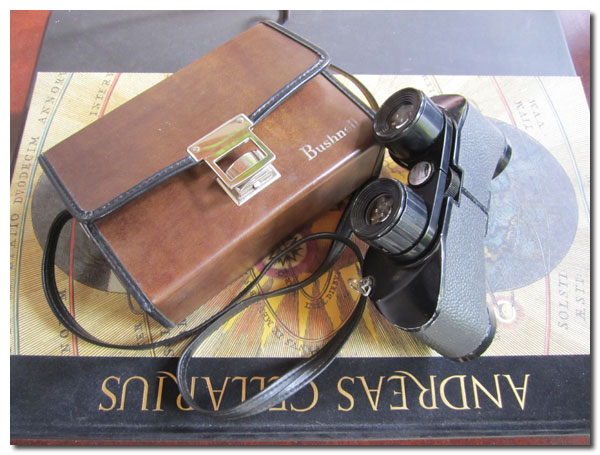As appeared in the April 2012 edition of the Syracuse Astronomical Society newsletter the Astronomical Chronicle.
The Syracuse Regional Market is as much a tradition as it is a phenomenon to those who were dragged out at young ages for Amish cherry pies or crates of canning tomatoes. Above all, it's a fun walk for seeing unbelievably old stuff in various states of (dis)repair, boxes full of 500 of the same thing, and really cheap… er… inexpensive laptops (those looking for a machine for outside image collection would do well to consider spending $150 on a refurbished Dell, something easy to do at the Market).
I'm writing this because I scored my second excellent pair of binoculars there and, despite risking someone else reading this and grabbing the next great deal, I wish to convey to you that astronomy tools can be collected locally on the very-cheap.
Saturday is the day for consuming, Sunday is the day for perusing. Sunday at the Market is the non-produce day when the whole place is one big flea market. To say you'll never know what you'll find is an understatement and, as some people specialize in "general merchandise," you really have to keep keen eyes on everything to not risk missing a great deal. Halfway through a completely random search, I came across an old leather case with the faded letters "Bushnell" on the front. Upon inspection, an old pair of wide-field Bushnell Rangemaster 7×35's, covered in a thin layer of grime, almost rubbed flat in some of the covering, with perfect (post-cleaning) lenses. Not a scratch, no dulling of any reflective coating, and only fingerprints to clean off. Gave'em the quick tour of the building, found them perfect right to the edges. My sales representative, John, said "$25."
After a brief discussion, I mentioned my astro-intended use of the binos, then spent a good 10 minutes with John talking about Darling Hill (he'd been there many Moons ago), Karl Schultz (I hope you're well and enjoying the newsletters!), Ray ("yup, still there.") and Stu. I left John with a brochure and mention of the next session, and was on my way home with 1960's-era no plastic-to-be-found Bushnells. After a thorough cleaning, I applied the Goodson Maneuver to the glassware – after a light canned-air dusting to get the big stuff off, take a Q-tip in high % isopropyl alcohol ( > 91%), place it at the center, and GENTLY swirl your way out to the edge. Repeat as necessary (I needed five Q-tips per surface to get them all cleaned out), then they're ready for microfiber wiping to get the residual haze off.
$25, some bathroom supplies, and 15 minutes of cleaning later, I've a pair of wide angle binos with fantastic optics (I mean MINT. Everything is still aligned because these binoculars are all-metal and a brick in your hands) to hand out at the next tour of the Night Sky. For those asking the first question my younger brother asked, a same pair had just sold for $75 on ebay. Someone online is particularly overconfident in their price, listing the same pair for $499 (link active as of April 2012).
What did I not pick up of interest? A cheap telescope (that, decidedly, was not ready for prime-time), three other binoculars (one good, one bad, one quite ugly), six heavy-duty tripods (for mounting binoculars or cameras, both of which get regular use at Darling Hill), some astronomy books (and some ooooold books at that. I'd fear committing to memory something in a 60-year-old astronomy book at this point), all kinds of cables and adapters (for those setting up a webcam astrophotography system), flash lights (even some red LED flavors!), and all kinds of heavy clothing (why spend $100 on a jacket you'll be getting bug spray all over?). And the merchandise turns over often enough that a monthly visit will likely yield new gear. As for the optics quality, if you can get a good clear view in the daytime, you'll likely have no problem at night (I found the clock against the far wall and used that to test).
It is mostly the case that any magnification will reveal new detail as you study the Night Sky. Having a primo tool on the cheap makes the study all the more worthwhile.
